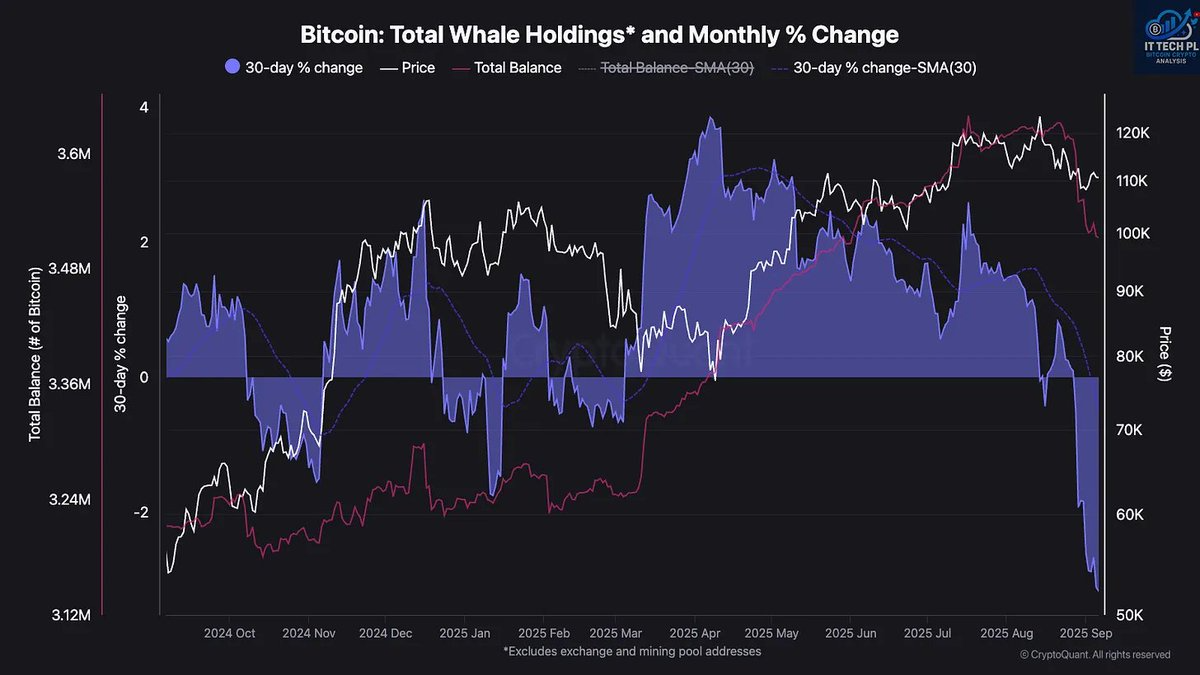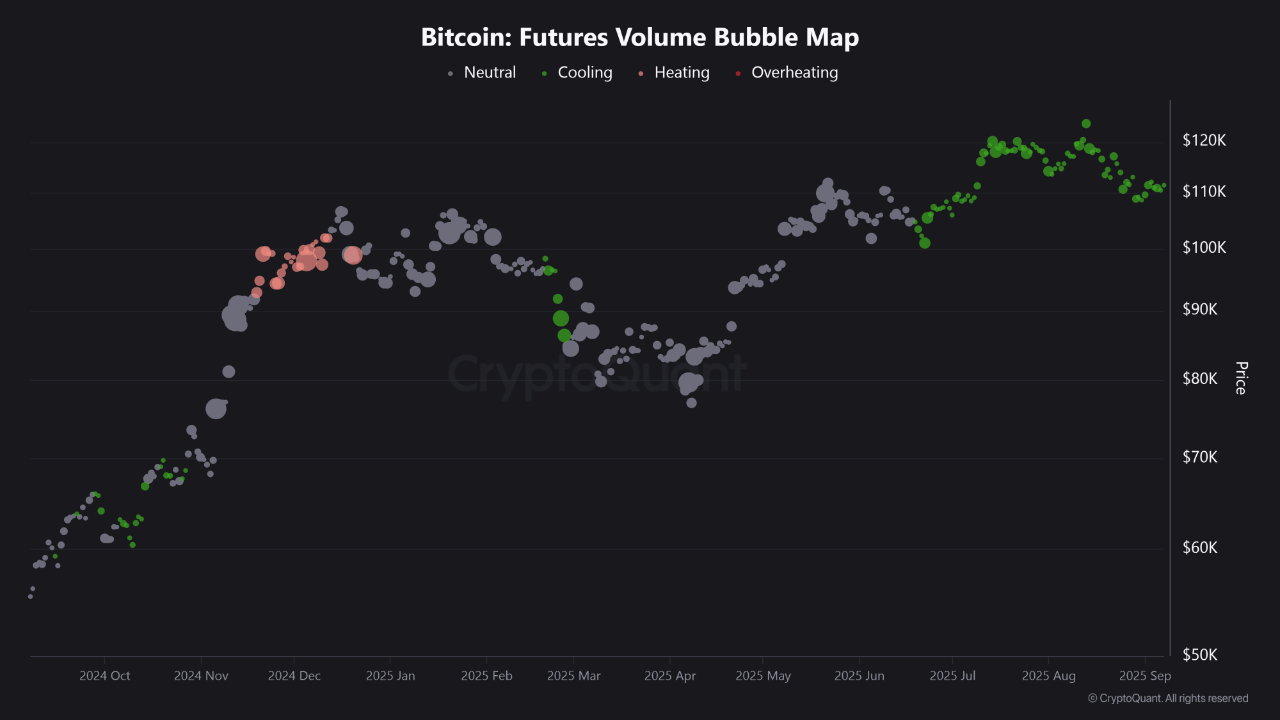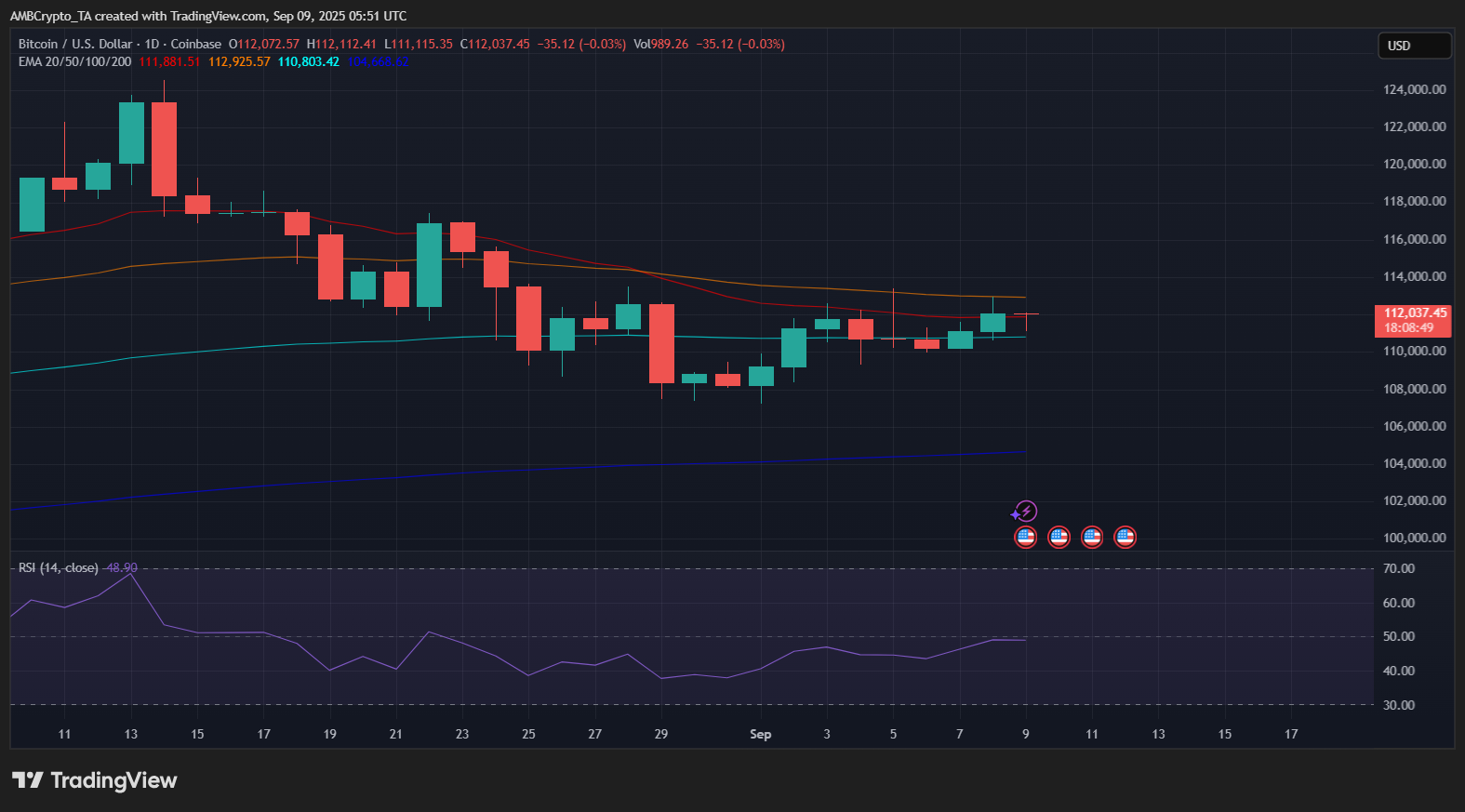Bitcoin’s recent pullback is driven by a decline in whale holdings and a surge in retail-dominated futures activity, leaving BTC range-bound near $112,000 and vulnerable to further downside unless institutional demand returns quickly.
-
Whales reduced holdings below 3.36M BTC
-
Futures data show retail traders leading flows and 90-day Taker CVD favors sellers
-
BTC stalled at ~$112,000 with short-term EMAs clustered overhead
Bitcoin whale pullback: whales reduce holdings below 3.36M BTC, futures turn retail-heavy — monitor BTC near $112K. Read analysis and next steps.
What is the Bitcoin whale pullback and why does it matter?
Bitcoin whale pullback refers to a measurable decline in BTC holdings among large addresses. Total Whale Balances fell below 3.36 million BTC, with a negative 30-day percentage change. This matters because reduced large-holder accumulation often weakens price support and increases volatility.
How are whales impacting BTC price action right now?
Large holders shifted from steady accumulation to distribution, coinciding with growing selling pressure. Data indicate the 30-day Percentage Change for whale balances turned negative, signaling reduced long-term support from institutions and high-net-worth holders.
Source: CryptoQuant (data reported as plain text).
How is futures market behavior shaping the short-term outlook?
Futures activity shows a retail-heavy composition, with the Futures Volume Bubble Map moving out of its “heating” phase. The 90-day Taker CVD is negative, confirming sellers dominate recent flows and elevating short-term downside risk.

Retail dominance in futures often leads to higher leverage, which can magnify directional moves and create abrupt liquidations. With whales stepping aside, retail-driven markets can broaden intraday ranges and reduce the reliability of support levels.
Source: CryptoQuant (plain text).
Why is BTC struggling at current technical levels?
Bitcoin hovered near $112,000 at press time. The 20-, 50- and 100-day exponential moving averages (EMAs) are clustered overhead, forming a technical ceiling. Until price breaks above these EMAs with volume confirmation, the path of least resistance remains horizontal or lower.

Technical resistance combined with declining whale support increases the likelihood of extended consolidation. Traders should watch order-book imbalances and on-chain flows for early confirmation of renewed institutional demand.
Source: CryptoQuant and TradingView (plain text).

What should traders and investors monitor next?
Key metrics to watch include: (1) whale balance changes, (2) futures Taker CVD and open interest, and (3) BTC’s ability to reclaim clustered EMAs with volume. A sustained return of whale accumulation would stabilize the market; persistent retail-led selling increases downside risk.
Frequently Asked Questions
How big was the whale balance decline?
Total Whale Balances dropped below 3.36 million BTC with a negative 30-day percentage change, signaling a clear reversal from prior accumulation trends and reduced institutional-level buying pressure.
Is Bitcoin likely to break lower from $112,000?
With short-term EMAs overhead and futures showing seller control, BTC risks further downside if institutional demand does not resume. Traders should use risk management and watch on-chain accumulation signals for confirmation.
Key Takeaways
- Whale reduction: Large-holder balances fell below 3.36M BTC, reducing institutional support.
- Retail-dominated futures: Futures volume and Taker CVD indicate sellers are in control.
- Technical resistance: BTC near $112K faces clustered EMAs overhead; momentum needs institutional pick-up to resume an uptrend.
Conclusion
This analysis shows a measurable Bitcoin whale pullback paired with retail-driven futures flows, leaving BTC range-bound near $112,000 and vulnerable to lower levels absent renewed institutional demand. Monitor whale balances, futures Taker CVD, and EMA breakouts for the next directional signal. COINOTAG will continue tracking on-chain data and market structure for updates.
